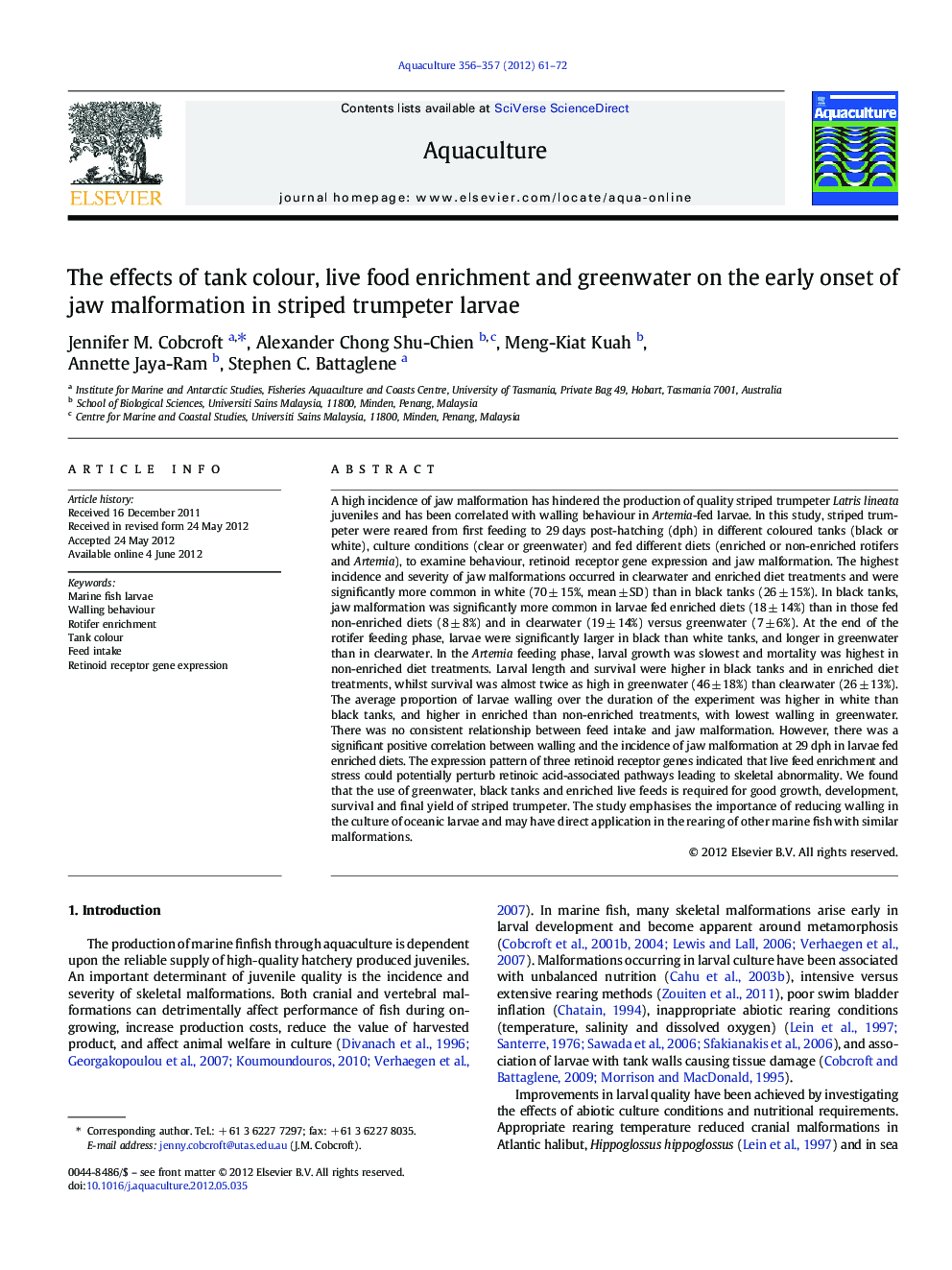| Article ID | Journal | Published Year | Pages | File Type |
|---|---|---|---|---|
| 2422548 | Aquaculture | 2012 | 12 Pages |
A high incidence of jaw malformation has hindered the production of quality striped trumpeter Latris lineata juveniles and has been correlated with walling behaviour in Artemia-fed larvae. In this study, striped trumpeter were reared from first feeding to 29 days post-hatching (dph) in different coloured tanks (black or white), culture conditions (clear or greenwater) and fed different diets (enriched or non-enriched rotifers and Artemia), to examine behaviour, retinoid receptor gene expression and jaw malformation. The highest incidence and severity of jaw malformations occurred in clearwater and enriched diet treatments and were significantly more common in white (70 ± 15%, mean ± SD) than in black tanks (26 ± 15%). In black tanks, jaw malformation was significantly more common in larvae fed enriched diets (18 ± 14%) than in those fed non-enriched diets (8 ± 8%) and in clearwater (19 ± 14%) versus greenwater (7 ± 6%). At the end of the rotifer feeding phase, larvae were significantly larger in black than white tanks, and longer in greenwater than in clearwater. In the Artemia feeding phase, larval growth was slowest and mortality was highest in non-enriched diet treatments. Larval length and survival were higher in black tanks and in enriched diet treatments, whilst survival was almost twice as high in greenwater (46 ± 18%) than clearwater (26 ± 13%). The average proportion of larvae walling over the duration of the experiment was higher in white than black tanks, and higher in enriched than non-enriched treatments, with lowest walling in greenwater. There was no consistent relationship between feed intake and jaw malformation. However, there was a significant positive correlation between walling and the incidence of jaw malformation at 29 dph in larvae fed enriched diets. The expression pattern of three retinoid receptor genes indicated that live feed enrichment and stress could potentially perturb retinoic acid-associated pathways leading to skeletal abnormality. We found that the use of greenwater, black tanks and enriched live feeds is required for good growth, development, survival and final yield of striped trumpeter. The study emphasises the importance of reducing walling in the culture of oceanic larvae and may have direct application in the rearing of other marine fish with similar malformations.
► We reared striped trumpeter to day 29 with different environments and diets. ► Jaw malformation was highest in white tanks, with clearwater and enriched diet. ► Jaw malformation was low and yield high in black tanks with greenwater. ► Retinoid receptor gene expression was affected by culture conditions and diet. ► Jaw malformation was linked to enrichment and walling behaviour but not feed intake.
